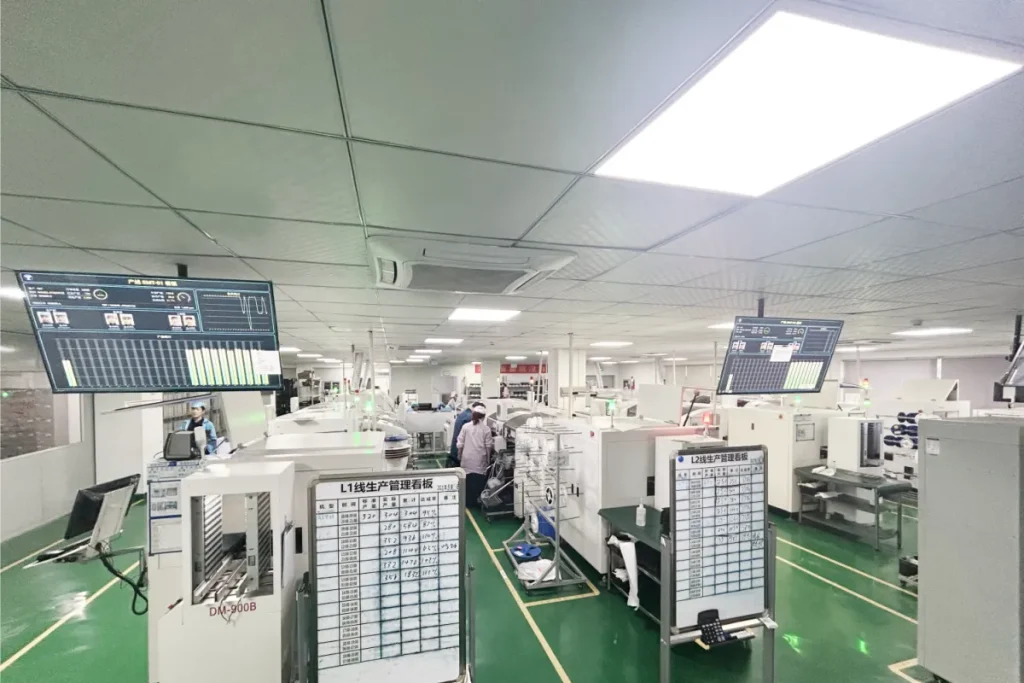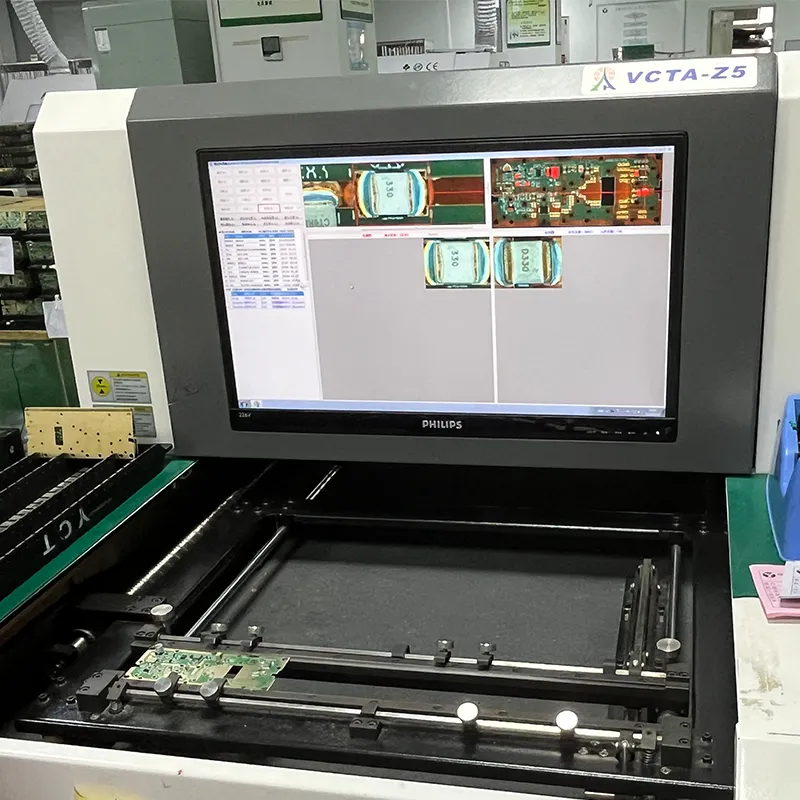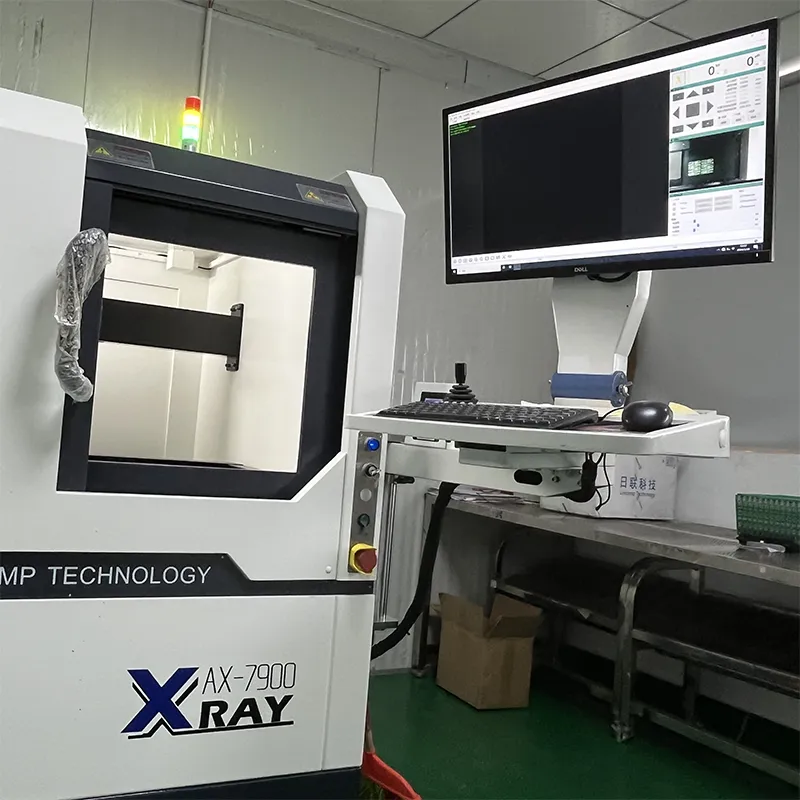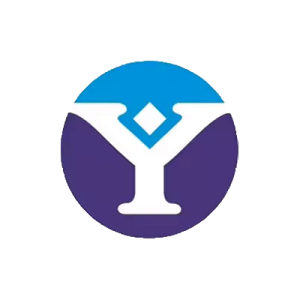Table of Contents
近期文章
What’s Included in Turnkey PCBA? A Buyer’s Checklist
A comprehensive turnkey PCB Assembly (PCBA) service is designed to simplify and accelerate every stage of printed circuit board production. This model is especially valuable for buyers who prioritize speed, convenience, and quality assurance. A turnkey solution spans all key steps in the PCBA workflow—from early design collaboration to final delivery—so engineers, startup founders, and operations teams can focus on product innovation and business growth without managing a complex supply chain.

Turnkey PCBA:
Turnkey PCBA means one service provider takes full responsibility for component sourcing, bare PCB fabrication, assembly, testing, and shipping. The buyer only needs to supply the project requirements, such as Gerber files and a Bill of Materials (BOM). By consolidating all production functions under a single accountable partner, turnkey PCB assembly helps reduce cost and lead time while maintaining consistent quality control.
What’s Included in Turnkey PCBA?
Technical Consultation and Project Review
- Design for Manufacturability (DFM) Analysis
The PCBA manufacturer systematically reviews Gerber, BOM, assembly drawings, and XY files. They run Design Rule Checks (DRC) against process capabilities, evaluate panelization, controlled impedance and solder paste apertures, solder mask bridge width, and confirm DFA/DFT (Design for Assembly/Design for Test) to support high yield and stable quality. - Optimization Recommendations
Improvements cover package sizes, pad and via design, approved vendor list (AVL) alignment, and component alternatives to reduce soldering defects and rework risks, control BOM cost, and reserve test points and fixture space to lower uncertainty during production and testing.
PCB Fabrication
- Material and Stackup Selection
Materials and stackups are chosen based on project needs, including base substrate, copper weight, dielectric constants, and finishes (ENIG/OSP/HASL/Immersion Silver/Immersion Tin). UL rating, flame class, thermal performance, and rigid‑flex requirements are defined to balance reliability and cost. - Bare Board Manufacturing
Rigid, flex, or rigid‑flex PCBs are fabricated to spec with attention to trace/space, impedance control, and solder mask coverage. Capabilities include blind/buried vias, via fill/cap, V‑cut/routing, silkscreen/UL marking, and IPC Class 2/3 quality levels. - Process Control and Testing
Multilayer lamination, controlled impedance, and flying probe electrical test are performed per specification. Readability of silkscreen and plating thickness are controlled. Impedance coupons and traceability marks may be added for downstream release and quality tracking.
Component Sourcing and Supply Chain Management
- Global Supply Chain Management
Parts are purchased per the BOM through authorized distributors and primary channels, balanced with internal safety stock. MOQ/NCNR terms are managed across passives, actives, connectors, and mechanical parts, with attention to price, lead time, and lifecycle (EOL/NRND) risks. - Quality and Traceability Assurance
Incoming materials are verified for authenticity and environmental compliance (RoHS/REACH; sample XRF checks). Lot/date codes and barcodes support full traceability. Non‑conformances trigger failure analysis and vetted alternates. Equivalent substitutions are proposed for shortages or obsolescence after buyer confirmation. - Special/Custom Components
Engineering evaluation and sourcing support are provided for long‑lead or scarce items such as custom magnetics, shields, and non‑standard connectors, including consignment if needed to reduce delay risk.
Assembly Processes
- Surface Mount Technology (SMT)
After stencil and aperture optimization, SPI verifies solder paste quality. Automated placement covers 01005 components, fine‑pitch ICs, BGA, and QFN. Reflow profiles are recorded and verified; nitrogen reflow can be used to improve BGA joint reliability. - Through‑Hole Technology (THT)
Connectors and heavy components are soldered using wave or selective solder, combined with forming fixtures and dip‑solder processes to ensure strong, consistent joints. - Mixed Technology
Double‑sided reflow and adhesive spot‑bonding are supported. The first/second reflow sequence is planned to avoid shadowing and rework difficulties. - Solder Materials and Processes
Lead‑free SAC305 or tin‑lead alloys are applied as required. No‑clean or washable flux systems are available, with optional board cleaning and ionic contamination testing. Conformal coating, mechanical reinforcement (underfill/epoxy), and thermal interface materials can be added for environmental durability.
Inspection and Quality Testing
- Automated Optical Inspection (AOI)
2D/3D AOI checks placement accuracy, polarity, tombstoning, bridging, and solder volume, with defect libraries and corrective action loops. - X‑Ray Inspection
2D/3D X‑ray (AXI) inspects hidden joints such as BGA/QFN, including void percentage and alignment of internal features. - Electrical Testing (ICT/Functional Test)
Flying probe, in‑circuit test (ICT), boundary scan, and functional test (FCT) are available. Power‑on tests with loads and limits can be defined. Custom fixtures and test programs are supported, with coverage and failure‑rate reporting. - Manual Inspection
Experienced inspectors perform First Article Inspection (FAI) and gate checks at key stations. Sampling plans ensure compliance with IPC levels and customer standards.


Packaging, Box Build, and Logistics
- Protective Packaging
ESD‑safe handling, vacuum moisture barrier bags (MBB), desiccants, and humidity indicator cards are used. Custom foam and shock‑resistant cartons, plus barcode and lot labels, reduce transit risk. - Box Build Integration
Services include PCB enclosure installation, panel and wiring harness integration, torque control for fasteners, labeling/barcoding, and targeted functional checks or short‑term burn‑in to ensure plug‑and‑play readiness. - Shipping and Delivery
Domestic and international delivery options are offered, including terms such as DAP/DDP. The provider prepares customs paperwork and compliance declarations.
After‑Sales Services and Technical Support
- Warranty and Defect Handling
An RMA process and response SLA are in place. Manufacturing defects are handled by rework, re‑build, or replacement. Major issues are documented with reports and corrective/preventive actions. - Technical Documentation and Compliance
Shipments include test and inspection reports, Certificates of Conformance (COC), material and finish data, IPC class and UL marks, and RoHS/REACH compliance documentation for audit and recordkeeping.
Buyer’s Checklist: How to Evaluate a Turnkey PCBA Provider
Documentation and File Submission
- Confirm the provider accepts complete and standardized data: Gerber/ODB++/IPC‑2581; BOM with MPNs and approved alternates; XY placement files; assembly/stencil/panel notes and controlled‑impedance details; test and programming instructions. NDA and version control should be supported.
- Verify pre‑production DFM/DFT reviews and risk lists, response timelines, practical recommendations, and a closed‑loop process for engineering changes.
Supply Chain Transparency
- Ask if components are sourced via authorized channels. Review anti‑counterfeit and incoming inspection steps (RoHS/REACH checks, lot/date code tracking, XRF sampling) and how EOL/NRND is monitored.
- Clarify substitution approval for shortages or obsolescence (equivalency validation, prior consent, change logs) and how MOQ/NCNR terms are handled.
Production and Assembly Capabilities
- Ensure coverage for required processes and structures: 01005/fine pitch, BGA/QFN, controlled impedance/HDI, rigid‑flex, double‑sided reflow, conformal coating/potting.
- Request line and capacity details (SMT line configuration, changeover time, min/max lot sizes) and how they ramp from prototypes to mass production with defined yield targets.
Quality System
- Check SPI/AOI/X‑ray/AXI coverage, in‑process controls, and whether MES/barcode traceability is in place.
- Confirm certifications and standards compliance (for example, ISO 9001, IPC‑A‑610 Class 2/3, IPC‑6012, ANSI/ESD S20.20; industry‑specific standards such as ISO 13485, IATF 16949, UL as applicable).
Test Options
- Define the test scope: flying probe, ICT, boundary scan, FCT, burn‑in or stress tests, plus programming and calibration support.
- Confirm the ability to design/maintain fixtures and test code, and to provide coverage and DPPM/defect reports with failure analysis support.
Custom Services
- Ask about firmware programming, serial/MAC/key injection, labeling and barcode traceability, and box build integration.
- Confirm special processes and logistics: conformal coating, potting, thermal management, custom packaging, temperature‑controlled or hazardous shipments, and export compliance.
Lead Time and Turnaround
- Get clear prototype and mass‑production lead times, key milestones, and material lead‑time planning (include FAI/PPAP when needed), plus capacity allocation.
- Review expedite policies and guarantees (cutoff times, SLAs, on‑time delivery rate) and mitigation plans for shortages.
Quoting and Cost
- Ensure the quote is all‑inclusive: materials, assembly, testing, programming, stencil/fixture NRE, packaging, and freight. Confirm shipping terms and taxes/duties (e.g., DAP/DDP).
- Ask about extra or hidden costs (DFM services, expedite fees, scrap/yield assumptions, disposition of incoming defects), and confirm quote validity, FX assumptions, and price‑adjustment rules.
Support and Communication
- Require a dedicated project manager and escalation path. Agree on cadence (check‑ins/weekly reports/gate reviews) for smooth cross‑team collaboration.
- Evaluate responsiveness and engineering support (fast prototype spins, ECN/ECO process and document control) and bilingual, cross‑time‑zone availability if needed.
After‑Sales Policy
- Confirm warranty period, RMA flow, response times, and whether 8D/CAPA reports are provided.
- Understand rework/rebuild boundaries, on‑site support, spare strategy, and lifecycle management, including Last‑Time‑Buy (LTB) guidance.
Red Flags to Watch For
- Opaque component origin or missing quality certificates: no proof of authorized distribution, no lot/date codes or barcode traceability, missing RoHS/REACH/COC documentation, unclear incoming QA and anti‑counterfeit steps.
- No DFM analysis or poor early collaboration: no manufacturability/testability reviews or risk list; few actionable optimizations; issues appear after line start, causing rework and delays.
- Slow quoting or poor communication: long, incomplete RFQ responses; no single owner; changes not tracked; no meeting notes or action items; no response‑time commitments.
- No inspection or test documentation: can’t provide AOI/X‑ray/ICT/FCT coverage and release criteria; missing SOPs, FAI, or sampling records; quality data not tied to MES/barcode traceability.
- Assembly‑only quotes that exclude materials or logistics, creating hidden costs: stencils/fixtures, programming, functional testing, cleaning/packaging, duties/freight, and yield loss not included; unclear validity and payment terms; unusually low prices without assumptions—leading to later add‑ons.
Why Choose Turnkey PCBA
Selecting a turnkey PCBA model consolidates manufacturing, assembly, and delivery under one accountable partner. With single‑window communication, end‑to‑end quality control, and full traceability, you reduce coordination costs and project risk. Using the buyer’s checklist above, you can secure predictable lead times, transparent costs, and stable yields—freeing your team to focus on product definition and user experience.
PCBAYCT specializes in turnkey PCB assembly. Our experienced team handles DFM/DFT reviews, component sourcing and risk planning, SMT/THT assembly, testing and programming, box build, packaging, and cross‑border logistics—managed under a dedicated project manager to keep milestones on track. We pair quality and compliance with transparent pricing and dependable after‑sales support, helping you move smoothly from prototype validation to pilot runs and full‑scale production.
If you are preparing your next iteration or production ramp, send your Gerber and BOM to PCBAYCT for a rapid DFM review and a time‑bound, end‑to‑end quote. Contact PCBAYCT today to launch your turnkey PCBA solution.

Barry Ding
CEO
About us
We are PCBAYCT Electronics — your trusted partner in high-quality PCB & PCBA manufacturing, backed by 15+ years of expertise and industry-leading capabilities.
Contact Us
to Begin Your Bessiness

